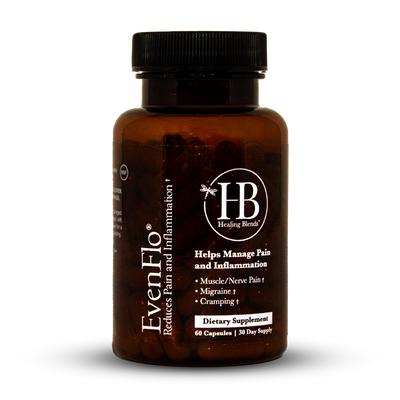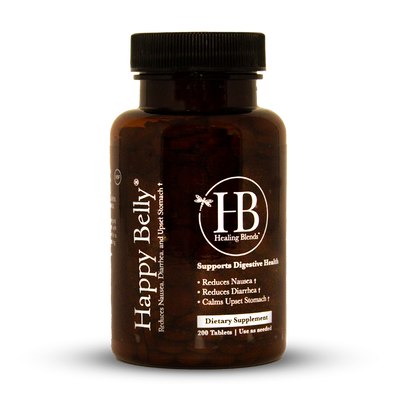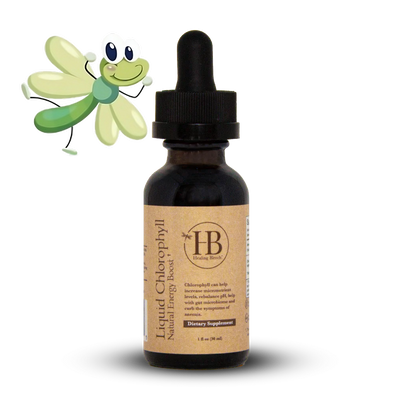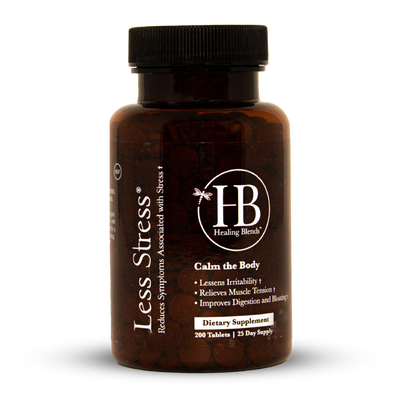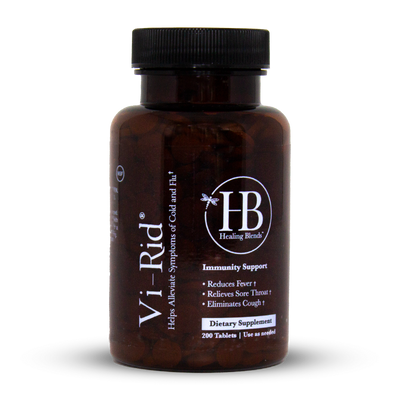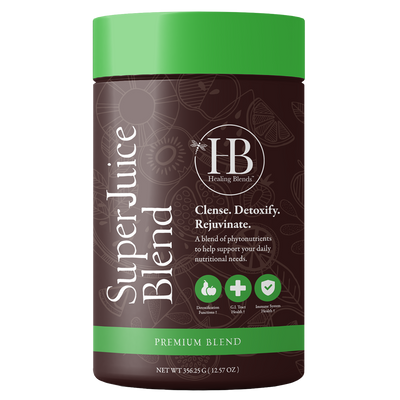Sickle Cell Disease: Cause, Types, Symptoms, and Living Better with SCD
What is Sickle Cell Disease?
Sickle cell disease, or Sickle cell anemia (SCD), is a genetic disease that occurs when an individual inherits two genes with sickle hemoglobin (Hb SS gene), one from each parent.
If you receive the gene from only one parent then you have a condition known as sickle cell trait (SCT) or ‘carriers’. People with sickle cell trait have one HB SS gene and one normal hemoglobin gene.

Among the healthy population, red blood cells (RBCs) are disc-shaped, supple and flexible, which helps them travel through small blood vessels. Patients with SCD develop abnormal sickle-shaped RBCs that are rigid, sticky and inflexible.
They are prone to getting stuck or trapped in thin blood vessels. This prevents proper blood circulation which causes VOC (vaso-ocular crisis) and pain episodes. Over time, it also causes tissue and organ damage.
Sickle Cell Trait though is not a medical condition. This affected population generally leads a normal life without any health risks or symptoms. However, they are ‘carriers’ and should get tested to ensure that they do not pass it on to their children.
What is the Most Severe Form of Sickle Cell Disease?

Sickle cell anemia (Hb SS or SS disease) is considered to be the most common and severe form of sickle cell disease. It develops in children between 4 to 6 months of age who have inherited a copy of the hemoglobin S gene (Hb SS gene) from both parents.
The SS symptoms overlap with other types of Sickle Cell disease, but they are experienced more severely and at a higher rate.
Symptoms of SS disease include fussiness, bedwetting due to kidney problems, yellow eyes or skin (jaundice), swollen hands and/or feet, recurring or frequent infections, and irritability among others.
What are the Different Types of Sickle Cell Disease?
Sickle cell disease is an umbrella term that refers to an entire group of hemoglobin related genetic diseases. Hemoglobin consists of 2 alpha and 2 beta globin chains.
Any mutation (or defect) in the beta globin genes can result in sickle cell disease.
The main types of SCD include:
Sickle Cell Anemia (SS): Also known as Hb SS disease, Sickle cell anemia is the most common and severe form of SCD. It is caused by inheriting two copies of the Hb S gene mutation - one from each parent. In other words, the patient’s body is only capable of producing hemoglobin S.
Sickle Hemoglobin-C Disease: Hb SC is the second most common type of SCD, caused by inheriting the Hb beta S gene from one parent and a Hb C gene from another. The symptoms are similar to sickle cell anemia but generally less frequent and severe.
Sickle Beta-Plus Thalassemia: SB+ or Beta-plus Thalassemia is caused when a person inherits a copy of the hemoglobin beta plus thalassemia gene from one parent and a Hb beta S gene from the other. SB+ patients are capable of producing normal hemoglobin to some extent, therefore the symptoms are less severe. However, they are still at risk of developing complications.
Sickle Beta-Zero Thalassemia: SB 0 or Beta-Zero Thalassemia is caused by inheriting two copies of the Hb beta S gene from both parents. It is similar to sickle cell anemia as it causes the body to only produce hemoglobin S.
The aforementioned types are the four most commonly observed forms of sickle cell disease. Less common types of SCD include Sickle Hemoglobin-D (SD), Sickle Hemoglobin-O (SO) and Sickle Hemoglobin-E (SE).
What are the Symptoms of Sickle Cell Disease?

The most common symptoms of sickle cell disease are:
- Fatigue
- Anemia
- Delayed growth or puberty in children
- Pain of varying intensity in joints, abdomen, chest and bones
- Swelling of hands and feet
- Bone infarcts (death of bone tissue)
- Poor vision due to retina damage
- Frequent Infections
What is the Life Expectancy of a Person with Sickle Cell Disease?

There are slight variations in the data, but the average life expectancy for a sickle cell patient is between 42 to 48 years.
The median life expectancy is 42 for males and 48 for females. This may further vary among demographics and with the type of SCD, treatment, and lifestyle choices.
Research suggests that there is a strong link between poor access to healthcare and a shorter life span among the SCD population. Improvements in medical technology and healthcare have significantly reduced the mortality rate of sickle cell disease, especially among children.
New advancements in research and an integrated approach for the care and treatment of SCD patients hold the key to ease the symptoms and improve overall quality of life for the population.
Why is Sickle Cell Caused?
Our body has red blood cells that use an iron-rich compound called hemoglobin to transport oxygen from the lungs to other parts of the body. The production of hemoglobin is controlled by a gene present in chromosome 11 – one of the 23 pairs of chromosomes present in humans.
If the gene is defective due to a mutation, it results in excessive production of hemoglobin. Subsequently, the surplus hemoglobin causes red blood cells to become rigid, misshapen and sticky.

Sickle cell is only caused if the defective gene is passed down by both parents to a child.
This child will then show symptoms of the disease in early childhood, typically at 5 to 6 months of age. The severity and symptoms vary among individuals, but it is linked to a high mortality rate.
What Blood Type Carries Sickle Cell Traits?
According to Hematology.org, the following ethnicities are more prone to the Sickle Cell Trait:
- African Americans (8 to 10 percent of African Americans have sickle cell trait)
- Hispanics
- South Asians
- Caucasians from southern Europe
- People from Middle Eastern countries

Please keep in mind that people with only one copy of the faulty gene that triggers excessive hemoglobin production are said to have the Sickle Cell Trait, as opposed to Sickle Cell Disease. But it is definitely a good indicator of the risk factor for these ethnicities.
A study was conducted by Imo State University, Owerri, and certain correlations were found between blood groups, Rhesus factor presence, and Sickle Cell Disease (SCD), 95% confidence.
Blood group O has the highest frequency distribution among sicklers, whereas blood group A has the least. This applies to those who have Sickle Cell Disease, as well as those who carry the Sickle Cell Trait.

What are the Current Accepted Sickle Cell Disease Treatment Options?
Stem cell transplant is the most widely accepted treatment for Sickle cell disease.
However, it is a complex procedure that involves replacing the bone marrow of an affected person with the bone marrow from a healthy person. It requires a matched donor.

Blood transfusions are also used to treat SCD complications. In this procedure, the red blood cells of a healthy person are transferred to a sickler’s body. This helps in controlling the symptoms and complications.
Hydroxyurea is a medication that increases Hemoglobin F (fetal hemoglobin) in the blood. This helps the RBCs retain their round shape, stay flexible, and grow bigger. The use of hydroxyurea can prevent RBCs from sickling (turning sickle-shaped). It can reduce the need for blood transfusions, occurrence of pain crises and hospital visits.
Endari therapy is a treatment where the powdered L-glutamine (a type of amino acid) is administered orally. It has been recently approved by the FDA for the treatment for children and adults. It may reduce the occurrence of symptoms of SCD in children above 5 years and adults.
What are the Shortcomings of Sickle Cell Disease Treatment Options?
Stem cell (or bone marrow) transplant is considered to be a high-risk treatment. As is often the case with transplants, the transplanted stem cells – even from a matched donor – can attack the host’s cells if they are not biologically compatible.
If this happens, they become a threat to the life of the host (the patient) and cause the transplant to fail. It can also lead to immune system problems and severe infections.
Therefore, this treatment is only advised for children or patients with extreme complications that cannot be managed by any other means.
Blood transfusions – the host body could have an immune response which defeats the purpose of the treatment. It can also cause infections and excess iron availability in the body.
Hydroxyurea – it can increase the risk of catching infections and cannot be consumed during pregnancy. Furthermore, hydroxyurea has several adverse side-effects.
Endari Therapy was only approved by the FDA in 2017, so the long-term effects of it are yet to be discovered. The known side effects of Endari include nausea, abdominal pain, chest pain, digestion problems, and mild to severe allergic reactions.
Complications of Sickle Cell Disease:

Sickle-shaped cells get stuck in blood vessels when they travel through small capillaries. This causes patients to feel a sudden burst of pain that ranges from mild to severe. This is called a ‘pain crisis’ or ‘pain episode’. It is the most common reason for the hospitalization of SCD patients.
Anemia is another common SCD complication. It occurs due to the lack of healthy red blood cells in patients. The common symptoms include fatigue, irritability, pale skin or jaundice, and slow growth amongst others. Patients may need blood transfusion to treat a severe bout of anemia.
Acute Chest Syndrome (ACS) is the most severe complication of sickle cell disease. It shares many of the symptoms of pneumonia such as coughing, chest pain, fever, difficulty breathing. It can be fatal and requires urgent treatment in a hospital.
SCD patients, especially children, are at a higher risk for infections that result from damage to the spleen or the loss of functioning tissue. It is important to prevent bacterial or viral infections such as pneumonia in children with SCD.
The sickle-cells block blood flow to the hands and feet. It can cause Hand-Foot Syndrome – the swelling of the hands and feet. This is accompanied by fever and is one of the first signs of sickle cell disease.
SCD can result in poor blood flow to the brain. This leads to the brain not having enough oxygen to operate well and also the death of healthy brain cells. In children, it can cause stroke, or cerebral infarction, which results in damaged brain tissues.
In adults, it can cause cerebral hemorrhage (bleeding). In some cases, it can also lead to a ‘silent stroke’ in young patients. A silent stroke refers to an asymptomatic stroke in which no outward symptoms are experienced by the patient but varying degrees of brain damage are caused.
If sickle cells block blood flow to the eye, it can damage the retina – a thin layer of tissue behind the eyes. This can lead to a loss of vision. In extreme cases, proliferative retinopathy, detachments or hemorrhages can even result in blindness.
SCD can also cause a slow and gradual onset of pulmonary hypertension. The main symptoms are shortness of breath, chest pain, and fainting episodes.
It is also linked to exercise intolerance.
What is Sickle Cell Crisis & Why Does it Happen?

A Sickle Cell Crisis refers to a sudden and abrupt episode of pain encountered by sickle cell disease patients. As we mentioned earlier, it occurs when sickled cells block (or get trapped) in small blood vessels restricting blood flow and oxygen to an organ, muscle, or bone.
There are specific events or conditions that can act as ‘triggers’ that lead to low oxygen levels or blood volume, which in turn can cause a sickle cell crisis. Exposure to cold weather, extreme exercise, or swimming in cold water are some examples of such triggers.
Sickle Cell & Inflammation
Inflammation in the human body is often a sign of body tissues responding to damage or discomfort. Sickle cell disease patients are prone to inflammation, which is exacerbated by complications like crisis or acute chest syndrome.
Recent findings in scientific research indicate that SCD is not merely an RBC rheological disease. It is closely linked to proinflammatory cytokines in patients which is the primary cause of chronic inflammation.
The red blood cells of sickle cell patients have poor levels of nitric oxide and oxygen - both of which play a vital role in repairing organ and tissue damage. There is a vicious cycle of inflammation and atypical RBC dehydration in SCD patients.
This cycle affects the intravascular walls of arteries and veins. Oxidative stress, especially on account of dehydration, also contributes to intravascular inflammation and damage to the RBC membrane.
Good nutrition from a well-balanced diet, hydration, and Omega-3 supplementation can help patients combat inflammation to extend the lifespan of red blood cells. This will prevent/reduce complications and improve the patient’s quality of life.
A supplement like Zinc, which is known to be a powerful antioxidant and anti-inflammatory agent, can decrease oxidative stress and generation of inflammatory cytokines.
Healing Blends’ all-natural herbal supplement, EvenFlo and EvenFlo Jr, have proven to be 93% effective in reducing inflammation in clinical trials.
Also Read: Sickle Cell Disease and Inflammation
How can you Prevent Sickle Cell Crisis?
The fact that is not repeated often enough is the fact that sicklers can actually lead a relatively normal and full life, even with their condition.
They just need to focus on taking care of their mental health (reduce stress and anxiety), their physical health (moderate, tolerable, mild exercises, adequate hydration, regular detoxification) and their equilibrium (the way they manage their emotions) more than those who do not have Sickle Cell Disease.
However, the motivation in sicklers to build healthy habits is far higher. The pay-off of watching their diet, and living without constant stress can yield a pain-free life. It’s within everyone’s grasp. The flip side of not following recommendations is pain episodes and hospitalization.
So when Sickle Cell warriors hit their groove, they are more focused, more healthy, more fit than large segments of the population who have comorbidities that don’t have early and significant outward manifestations.
Sickle Cell crisis can definitely be prevented.
- Healing Blends’ custom supplement EvenFlo has proven 93% effective in preventing crisis and promoting better hemoglobin counts in a peer-reviewed study.
- You can also make a series of small and effective lifestyle changes to reduce chances of slipping into a crisis. You can read about them in our Sickle Cell Crisis Prevention Toolkit.

How and Why do People Feel Pain During a Crisis?
A sickle cell crisis may frequently affect some patients while others have little-to-no episodes.
Research suggests that it is often caused by certain ‘triggers’ like over-exercising, stress, dehydration, sudden change in climate, or exposure to extreme weather.

These events lead to metabolic acidosis, low blood volume or other conditions that cause the sickle-shaped cells to get trapped in a blood vessel. The lack of blood flow to certain organs can also lead to a pain episode.
Such pain can be mild or severe and is commonly felt in the legs, arms, chest, back, or stomach. The severity and duration varies among patients. Pain episodes typically range from several hours to multiple days and may require hospitalization in some cases.
Can Sickle Cell Ever be Cured?
Currently, a bone marrow or stem cell transplantation is the only known treatment that can cure sickle cell disease. In the human body, the bone marrow is responsible for producing new blood cells. This can be achieved by a stem cell (bone marrow) transplant.
In this procedure, doctors transplant healthy stem cells of a donor to replace the defective stem cells in the bone marrow of the patient.The medical procedure is expensive, difficult to obtain, and carries significant health risks.
Living with Sickle Cell:

People living with sickle cell can find it challenging to navigate their personal and professional commitments. Frequent episodes of pain and chronic fatigue can disrupt day to day tasks. A ‘crisis’ can be unpredictable and the severity can vary among patients.
Moreover, the pain episodes and complications can be taxing, both physically and mentally. Patients should find healthy coping mechanisms and devise a long-term plan for pain management instead of relying on opioids or other medicines with side-effects.
Sicklers need a strong support system, courage, and the right disease education. Parents, allies, friends, and caregivers are an important part of their living experience - all of whom play an important role in their well being.
There are many stigmas and negative reactions among the general population due to poor disease education. SCD patients should never respond to them by being selective or silent. These negative emotional experiences can lead to frustration, isolation, and shame.
As of now, there is no universal cure for SCD other than bone marrow transplants. It is a chronic condition that patients must learn to manage with a multi-disciplinary program of care. It is important for patients to find ways to increase their immunity, stamina and feel good on a daily basis.
We, at Healing Blends Global, firmly believe that sickle cell patients are fully capable of leading a productive and joyful life. Dr. Charlie Ware, a leading medical expert and the founder of HBG, is a sickle cell survivor who leads by example.
He has spent a large part of his intellectual career researching ways to provide medical care so that SCD patients may pursue happiness and live a meaningful life. EvenFlo, a peer-reviewed herbal supplement, has shown 93% effectiveness at preventing crisis in SCD patients.
We have also provided a silo of practical information for patients. This includes disease education and diet and lifestyle recommendations to improve quality of life. We’ll also discuss the dos and don’ts when caring for children living with sickle cell in a later section.
Sickle Cell & Diet
SCD patients are more likely to develop nutritional deficiencies and require macronutrients above the recommended daily allowance (RDA) for the general population. This should be obtained from a balanced diet.
Patients are advised to identify their dietary needs in consultation with a certified nutritionist and their healthcare provider to formulate a nutritional strategy.

A well-balanced diet should account for sufficient macronutrients (fats, carbs and proteins) and micronutrients (vitamins, minerals, water and dietary fiber) as per the patient’s needs. Plant-based protein should be preferred over meat-based protein (more on that later).
Dietary supplements should be included to prevent common micronutrient deficiencies, especially when sufficient quantities (RDA) cannot be obtained from the diet. Vitamin D, folic acid, and zinc deficiencies are common concerns in this population.
Manganese, B vitamins and Liquid Chlorophyll can also be chosen for the purpose of supplementation. The following should be included in an SCD-friendly diet:
- Whole grains and fortified grains rich in fiber, folate, B-vitamins and magnesium.
- Bright-colored and dark leafy vegetables rich in vitamins, potassium, folate, and fiber.
- Fruits that are rich in vitamins, minerals, and fiber.
- Plant-based protein, fish, and beans.
- Sources of zinc and B vitamins.
We advise patients to embolden their nutritional strategy with all-natural supplements such as EvenFlo, Chlorophyll, and Zinc to achieve favorable immune status and improve overall health.
Also Read: Nutrition & Sickle Cell Disease: Diet for a Better Life
What Herbs are Good for Sickle Cell?
A lot of scientific research has been conducted in the field of plant products, especially herbs, as a pharmacology to manage sickle cell disease. Antisickling herbs are currently being researched in detail to find potential alternatives to hydroxyurea.

Herbs such as Licorice, Dong quai, Cordaylis, Salvia, Poria, White Peony, and Rehmannia are known for their beneficial phytochemicals that have anti-inflammatory and vasodilating effects.
Sipo (Entandrophragma utile), Mexican tea (Chenopodium ambrosioides), and Guinea hen weed (Petiveria alliacea) have also gained traction as potential antisickling herbs.
Many of these herbs have been used in Ayurveda, Chinese herbalism and several other traditional or alternative medicinal systems to treat acute and chronic pain conditions, including the complications of sickle cell disease.
It can be challenging to procure these herbs and even more convoluted to understand the correct dosage or method to use them.
Many of these herbs have been used in EvenFlo with the specific intent to create an easy-to-use supplement to manage sickle cell disease.
In addition to a peer-reviewed supplement like EvenFlo, SCD patients can benefit from the antioxidants in green tea. Unsweetened green tea assists the body in preventing cell damage.
What Vitamins are Good for Sickle Cell?
Research indicates that antioxidants can negate oxygen-related damage to the cells.
SCD patients usually have low antioxidant levels despite the intake of Vitamin A, E and C in their diet. In such cases, vitamin supplementation can help bridge the nutritional gap.
Folic acid, vitamin D, and vitamin B6 supplementation is also advised as a part of care and management for SCD patients. A recent study indicates that Pyridoxine (a form of vitamin B6) can be helpful in oxidative challenges faced by sickle cell patients.
Zinc & Sickle Cell Disease:
Zinc plays a key role in our immunity, which keeps infections at bay.
Zinc also decreases oxidative stress and inflammatory cytokines. Since SCD patients are prone to these afflictions, they can benefit from zinc supplementation.
Zinc deficiency is a common occurrence in patients sickle cell anemia. Research shows that there are marked clinical similarities between zinc-deficient individuals and patients with sickle cell anemia.

Moreover, studies show that long-term zinc supplementation can help children with SCD maintain normal height and weight. It can also significantly reduce frequency of infections and crisis-related hospitalizations among patients.
What Kind of Diet - Meat Based or Plant Based Should Sicklers Take?
Research clearly indicates that SCD patients need more protein than the general population.
Generally, protein should provide for 35% of their daily energy intake from a balanced diet. However, plant and animal-based proteins have a different impact on this population.
Research also suggests that plant-based protein is a superior choice compared to meat-based protein.
This recommendation is based on the fact that SCD patients struggle with inflammation-related health problems and plant-based protein lowers inflammation.
SCD can cause intolerance or loss of control over regulatory processes. This results in chronic inflammation. Plants contain polyphenols and several other ingredients that lower oxidative stress and reduce inflammation.
In contrast, meat-based protein is linked to higher levels of inflammation. The consumption of ‘deli’ or processed meats has also been linked to an increased risk of cardiovascular problems, cancer, and diabetes.
Eggs and fish are an exception. Certain varieties of fish such as tuna, mackerel, are rich in EFA (Omega-3), the benefits of which we will cover in the next section.
Eggs, on the other hand, should be considered on a case-by-case basis. Studies show that they cause pro-inflammatory responses in some people while have no effect on others. Therefore, eggs should either be completely avoided or gradually added to check a patient’s response.
Common sources of plant based protein include beans (especially chickpeas & garbanzo beans), lentils, nuts, quinoa, oats, green peas and seeds like hempseed, flaxseed, chia seeds and pumpkin seeds.
You can also include protein-rich foods and vegetables like brussel sprouts, broccoli, asparagus, artichokes, guava, blackberries, bananas and nectarines.
Also Read: Proteins in the Diet of Sickle Cell Patients: Which Kind & How Much
Sickle Cell and Essential Fatty Acids (EFA):
Fatty acids refer to the naturally occurring ingredients in oils (or fat). In the context of SCD, we will concern ourselves with the essential fatty acids (EFA), especially Omega-3 and Omega-6 fatty acids.
The human body needs them (essential) but we are not biologically capable of synthesizing (or producing them) within the body. This means they can only be obtained through diet or supplementation.
Several studies have concluded that EFA (and Omega-3 supplements) have an anti-inflammatory component. In simple words, they can be effectively used as a therapeutic agent for SCD Patients. It can change the inflammatory response and blood cell adhesion in sickle cell disease patients.
There are three types of EFA:
- ALA - Alpha Linolenic Acid
- EPA - Eicosapentaenoic Acid
- DHA (Docosahexaenoic acid)
EPA and DHA (also known as long-chain fatty acids) work on a variety of biological mechanisms to reduce inflammation and influence inflammatory pathways. They can increase good cholesterol (HDL), improve lipid profiles, and reduce occlusion - reduced blood flow to the heart.
The evidence-backed benefits of EFA or Omega-3 supplementation include:
- Antioxidant and anti-inflammatory properties
- Improved blood flow
- Increase in RC membrane flexibility
- Can reduce or prevent sickling in SCD patients
- Fewer pain episodes and hospitalizations
- Lower frequency and severity of RBC rupturing
- Decrease in blood clots
- Less hospitalizations
In a nutshell, there is reason to support the use of supplementation as a part of a holistic treatment to curb the inflammatory aspects of sickle cell disease.
Also Read: Essential Fatty Acids Can Reduce Sickle Cell Pain
How to Gain Weight with Sickle Cell Disease?
SCD is accompanied by pain episodes, fatigue and nutrient deficiencies. Patients typically have a poor appetite and suffer from chronic fatigue. SCD is also linked to delayed growth or underdeveloped growth and delayed puberty, especially children.

There are four key aspects to gaining weight and improving overall health for SCD patients:
A Balanced Diet: SCD patients need a higher amount of macro and micronutrients compared to the general population. This should be obtained in the form of a balanced diet with a healthy serving (35% of energy intake) of plant-based protein as recommended in the previous section.
Regular Exercise: Low to moderate intensity exercise like yoga, hiking, jogging, or cycling are safe, permissible and beneficial for SCD patients. It is important to exercise regularly and in consultation with a certified trainer and your healthcare provider. Patients should not exercise more than 55% to 65% of the predicted maximum to avoid any undue stress. Contact sports and high-intensity exercise should also be avoided.
Dietary Supplements: While diet ensures good nutrition, dietary supplements can be used to complement it and ensure that no micronutrient deficiencies are left unchecked. We recommend all-natural supplements like EvenFlo Jr, Vitamin D, Zinc, Folic Acid and Chlorophyll to boost growth and improve the quality of life in patients.
Sufficient Rest/Sleep: A healthy lifestyle is incomplete without sufficient sleep. SCD patients should get ample rest to prevent fatigue and upto 8 to 10 hours of sleep to allow the body to heal, rest, and rejuvenate.
Our Sickle Cell disease supplement EvenFlo (and its special variant for children, EvenFlo Jr) is clinically proven to improve weight indices with regular consumption.

Sickle Cell and Gut Health:
The human gut refers to the gastrointestinal tract that is home to microorganisms such as fungi, bacteria, and viruses. It is a vast ecosystem of microbiomes, commonly called ‘gut flora’ or ‘gut’.
These microorganisms are deeply connected to our health and play a key role in our daily life. From enzyme synthesis to immunity, they impress upon every level of our emotional, physical and psychological health.
SCD decreases the body's ability to efficiently transport oxygen via the blood to various tissues and organs. Thus, patients are prone to hypoxia - insufficient or low oxygen levels in tissues.
We recommended a two step approach to ensure optimal gut health for SCD patients:
- Correct imbalances and restore gut flora and health with supplements
- Eat a well-balanced diet to build and sustain ideal gut health
Studies have established a link between SCD, hypoxia and gut health. Hypoxia alters the gut microbiome, which can lead to sleep disorders. Subsequently, this can increase the severity of sickle cell disease by exacerbating inflammation and stress. This makes gut health extremely important for SCD patients.
Furthermore, the following points should be followed to ensure good gut health:
- Add probiotics and prebiotics to your diet
- Avoid stress and stressors
- Regular low/moderate intensity exercise
- Eat whole foods from varied sources to improve gut diversity
- Get sufficient high-quality sleep
- Add plant-protein, herbs/spices to the diet
Also Read: How Does Sickle Cell Disease Impact Gut Health
Nutrition for Children with Sickle Cell Disease:
A nutrition assessment in children with sickle cell disease clearly shows that most subjects suffer from a pronounced lack of proper nutrition to navigate life with this condition.
There is a sentiment of emphasizing nutrition specific education amongst parents and caregivers looking after children with SCD.
Another study recommends comprehensive management coupling nutritional therapy to medical care. A good diet that benefits children with Sickle Cell Disease should focus on:
- Foods with antioxidant nutrients like Vitamins C & E like peppers, broccoli, oily fish
- Calcium rich foods like kale, okra, pulchards
Sickle Cell Disease & Exercise:

Surveys reveal that SCD patients have low to very low activity levels, with a majority reporting a sedentary lifestyle. This can be attributed to the false belief that exercise leads to complications. However, there is no scientific literature or evidence to corroborate this.
Researchers and doctors unanimously agree that low-impact and moderate-intensity exercise is safe and beneficial for sickle cell patients. There is no risk of complications with moderate exercise because it works within the limited baseline of blood deoxygenation.
Should People with Sickle Cell Disease Exercise?
There are many misconceptions related to exercise and sickle cell disease. It is a misnomer that SCD patients, young or old, should not partake in any form of exercise. Only heavy or high-intensity exercise can potentially lead to complications among this population.
Sickle cell patients who engage in moderate-intensity exercise regularly have shown significant genetic changes that lower inflammation and improve muscle function. It is safe for children with sickle cell disease to engage in low-to-moderate intensity exercise as well.

That said, physical exercise must be tailored to the condition of a sickle cell patient, especially children. I recommend our post on why yoga and relaxation techniques like breath work and meditation can be an excellent option for children living with sickle cell disease.
We recommend that patients start with low-impact exercise and increase the intensity gradually, especially if they are transitioning from a very sedentary lifestyle. SCD patients need regular breaks with proper hydration.
Acceptable exercise options include hiking, spin classes, dance-fitness and indoor rowing machines or treadmills. Over time, you can steadily increase the duration and intensity to 3 to 5 moderate-intensity sessions per week.
Also Read: Exercise and its Benefits for Sickle Cell Disease (SCD) Kids and Adolescents
Is Yoga Good for People with Sickle Cell Disease?
Yoga falls under the category of low to moderate intensity exercise. As mentioned earlier, there is ample research that links regular exercise to a better quality of life and improved health.
Yoga, at depth, is a multifaceted practice that can be divided into a) postures, b) meditation, and c) breath work or breathing exercises. Each of these aspects can be tailored to the needs of sickle cell disease patients to attain significant health benefits.
Yoga postures (called asanas) improve flexibility, muscle function, and blood circulation They decrease microvascular deficits, pain, and inflammation. Mindfulness or progressive meditation can be used as a deep relaxation technique for managing pain and improving mental health.
The breathing techniques of yoga - called pranayama - have also shown promising results when used in the form of hypoxia therapy. Studies show that they support the formation of healthy red blood cells and improve their oxygen carrying capacity.
Most Sickle Cell patients do not get enough movement and thus suffer from lack of flexibility. For them Restorative Yoga is a low stress, high return introduction to this discipline.

In conclusion, yoga is a non-pharmacological intervention that has been shown to reduce pain in certain segments of the Sickle Cell population. However, it should be done under the guidance of a certified or trained professional to avoid other complications. If done right, it can be an effective part of a long-term plan for self-care and pain management in SCD patients.
What Complications may Arise for People with Sickle Cell through Exercise?

High-intensity exercise can result in a pain episode and increased risk of heart problems.
The main reason for this is that extreme workouts cause dehydration, low concentration or deficiency of oxygen in the blood, and metabolic acidosis (too much acid in the body fluids).
These factors can trigger a sickle cell attack and lead to a condition known as ‘exercise collapse’. They may also result in a sickle cell crisis. Low-to-moderate intensity exercise is neither dangerous or harmful.
Research shows that regular low-intensity workouts like yoga have several physiological benefits for SCD patients. Patients can combine exercise with antioxidant-rich supplements like Liquid Chlorophyll that fight free radicals in the body, and strengthens their ability to cope with stress.
Living with a Child who Has Sickle Cell Disease: What To Do to Improve Their Quality of Life

Cultivate Trust: Children rely on their parents or guardians to take care of them. It is important to cultivate an air of kindness, patience, and empathy while dealing with SCD children. The severity and symptoms vary from person to person. Trust them when they tell you that they are in pain and take every symptom seriously.
Understand: If your child is an SCD patient, you need to understand and establish their limitations. The first step is to identify their crisis-triggers and journal them. After every episode, speak to your child to inquire what may have caused it. You may not always get a helpful answer, but over time, you will have a list of dos and don’ts for the child.
Inform/Educate: Once you have a list to work with, share them with your child, and his/her teachers or caregivers. Discuss all the known ‘crisis triggers’ with your child to ensure that they don’t accidentally lead to a painful episode or hospitalization.
For instance, you can teach them the importance of hydration and avoiding extreme heat or cold. Tell them to take frequent rest breaks to avoid fatigue or dehydration.
Support: Accompany the child for all visits to the doctor and keep the doctor updated about any changes in the child’s condition. Confirm that your child takes the prescribed medicines and treatment as advised by the healthcare practitioner.
Don’t Ignore Minor Symptoms: If your child is running a mild fever, you should get medical advice instead of treating it with over-the-counter medicines. In children with SCD, a harmless fever can be a sign of an impending infection or may quickly escalate into a serious health problem.
Teach them Healthy Habits: You need to help your child build lasting health practices that will improve their general wellbeing and quality of life. Plenty of liquids, a SCD-friendly (and balanced) diet, and low-to-moderate intensity exercise will improve their quality of life. At the same time, acquaint them with the dangers of smoking, drinking, or drugs.
Pain Management: Try to create a stress free environment, to whatever extent possible, to care for your child. A good diet, lots of liquids, restful sleep and dietary supplements such as EvenFlo restful sleep can play a significant role in their wellbeing.
Does Cold Impact Someone with Sickle Cell Disease?
Cold, or any extreme change in temperature, can trigger sickling and a pain episode. When a patient is exposed to cold, the blood rushes into the parts of the body that are exposed to the cold.
This increases the danger and risk of sickling in the exposed areas, which may lead to a complication. Patients are advised to always dress warmly and avoid extreme weather.
Sickle Cell Disease & Ayurveda
Ayurveda is one the oldest traditional medicinal systems that originated in the Indian sub-continent. It is a guide to wellness with several seminal texts on how to use herbs, food, lifestyle, and daily routines to maintain good health.
In Ayurveda, sickle cell disease is said to originate in ‘beejadosha’ - imperfect sperm or ovum. This leads to problems of the blood (rakta) that cause the platelets to have abnormal attributes.
Ayurveda recognizes SCD as an inherited disease and recommends the use of certain herbs with dietary & lifestyle modifications to manage sickle cell disease.
Herbal remedies for treatment of SCD include Heerak Bhasma, Triphala Guggulu, Rasayan Vati, and Purnarnavadi Guggulu. Herbs like Muta (Cyperus rotundus), Guduchi (Tinosporia cordifolia) and Amalaki (Emblica officinalis) are also used.
Herbs such as Licorice (Yashtimadhu), Holy Basil (Tulsi), Methi (Fenugreek), Thyme, and Long Pepper (Piper Longum) are recommended to strengthen immunity and prevent frequent infections.
Sickle Cell Disease & Mental Health:

Living with a chronic disease can be a frustrating and overwhelming experience for patients. SCD patients, being no different, are susceptible to various psychological complications such as anxiety and depression.
SCD can lead to an isolated life as patients have trouble with chronic fatigue and pain. In children, this can lead to a poor self-image and social anxiety. Adults may also experience fear, stress, anxiety, and depression if their daily activities are constantly disrupted.
In extreme cases, poor coping mechanisms can lead to psychosis, clinical depression, and neurocognitive impairment, especially in children. Such patients may require psychological interventions such as cognitive behavioral therapy (CBT) and psychological counseling.
How to Have Stable Emotions with Sickle Cell Disease?

To avoid psychological complications, SCD patients need to find healthy ways to cope with pain and work towards improving the general quality of life. Patients without a support group, family, or community are more vulnerable to such complications.
We highly recommend joining a support group or talking to a professional pediatric counselor (for children) if you experience any clinical symptoms of anxiety and depression. We’ve provided valuable information and supplements to pain management and care.
A balanced diet, good sleep, regular exercise and adjunctive treatments like EvenFlo are of utmost importance. They can do a great deal to improve the physical and psychological quality of life for sickle cell disease patients.
You can try supplements with potent but no side-effect adaptogens that help reduce stress and anxiety, and give both sicklers as well as their caregivers the fortitude to stay strong in the face of potential adversities.
Try PeacefulCalm and LessStress to care for emotional well-being.
Also Read: Natural Treatments for Emotional Distress: Don’t Let Your Mood Negatively Impact Health
Sickle Cell Support Groups in USA:
A support group can anchor patients to a strong sense of community and psychological well being. We strongly advise patients (and their families) to use these resources for social, emotional and economic support.
There are several uniquely committed sickle cell support groups in America for children and adults. Here are a few that you may find helpful:
Healing Blends Sickle Cell Support Group: Healing Blends provided an inclusive and safe place for patients and family members to express themselves without any inhibitions. It offers a welcoming environment for members of all religions, race, cultures, sexual orientation, and genders.
Sickle Cell Disease Association of America: SCDAA is a support platform for the sickle cell community with chapters in several states to stay connected. They offer a large repository of educational information and an up-to-date directory of disease education, resources, and treatment options.
CSCF - Children’s Sickle Cell Foundation: CSCF provided social, emotional and educational support to children with sickle cell disease. They offer programs for family members and run frequent campaigns to raise awareness or funds for SCD-related research.
How to Care for a Family Member with Sickle Cell Disease?
Sickle Cell Disease is tough.
And not just on the warrior, but also on the family of the individual with this chronic condition.
Matters take a turn for the worse when the member in question is a child. Research suggests that the primary caregiver goes through elevated levels of stress, and is at a higher risk of developing stress & anxiety related diseases.

The presence of a child with Sickle Cell Disease also results in strained interpersonal relationships in the family.
Under such circumstances, there are a few things that caregivers should do as a part of creating a healthy environment of trust and understanding for the warrior:
- Focus on self-care. If caregivers fall sick, it can result in the needs of the patient being grossly neglected. It is thus vital that parents and family members keep their stress, blood, and other key health markers in check.
- Dose up on supplements that benefit the body in the long run. It is essential to not only compensate for vitamin and micronutrient deficiencies in the now, but also to gradually improve the basis for health by reversing the damage done by poor diet, pollution, allergens, and general toxicity.
- Practice honest communication. Radical candor beats false optimism. Ensure that the family member is cognizant of their condition at all points of time, and has the knowledge they need to make informed, empowering decisions about their own health and well-being.
Sickle Cell & EvenFlo:
EvenFlo is an evidence-based and peer-reviewed herbal supplement. It ranks as the most effective herbal supplement currently available for chronic pain conditions like sickle cell disease.
It also has the distinction of being non-GMO, vegetarian, and gluten-free with no artificial colors or ingredients. This deliberate formulation makes it suitable and accessible to the widest possible spectrum of sickle cell patients.
It draws potent phytochemicals from 11 super-herbs such as Rehmannia, White Peony, and Dong Quai to reduce pain, manage inflammation, and alleviate spasms. It should be taken twice a day with meals to manage severe symptoms or can be taken once a day for maintenance.
Some of its salient health benefits of EvenFlo include:
- Better quality of life
- Decrease inflammation
- Increase blood flow
- Improve pain conditions
- Improve hemoglobin count
- Increase weight
EvenFlo has been clinically proven to reduce hospital visits. Patients who regularly use EvenFlo report a significant increase in energy and stamina, and improvement in nerve pain, PMS, and migraines.
EvenFlo has helped patients lead a respectable life after years of struggling to keep up with daily tasks and social commitments. Sickle cell patients who have used EvenFlo report their highest hemoglobin count after a few months of regular use.
The EvenFlo Starter Kit combines HB Zinc and Liquid Chlorophyll with EvenFlo, to deliver a holistic solution to pain and crisis management. Additionally, Healing Blends Global has also formulated EvenFlo Jr for the distinct needs of children living with sickle cell disease.
It promotes better blood circulation, reduces inflammation and helps manage muscle cramps, and has shown 93% effectiveness in a double blind study.

















